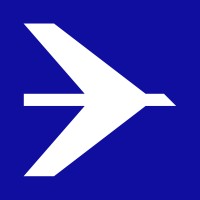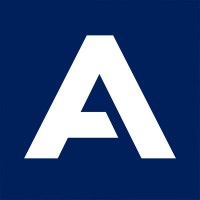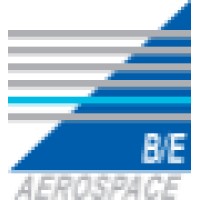Company Details
rtx
134,859
697,934
3364
rtx.com
1
RTX_2921552
Completed

RTX Company CyberSecurity Posture
rtx.comRTX is comprised of three market-leading businesses – Collins Aerospace, Pratt & Whitney and Raytheon – working as one to answer the biggest questions and solve the hardest problems in aerospace and defense.
Company Details
rtx
134,859
697,934
3364
rtx.com
1
RTX_2921552
Completed
Between 750 and 799

 RTX Global Score (TPRM)
RTX Global Score (TPRM)XXXX

Description: A ransomware attack targeted Collins Aerospace’s **ARINC cMUSE software**, a critical system used by airlines to manage shared check-in desks and boarding gates at major European airports, including **London Heathrow, Brussels, and Berlin**. The attack—identified as a variant of **Hardbit ransomware**—caused **severe operational disruptions**, forcing airlines to revert to manual passenger processing. Recovery efforts were hampered by **repeated reinfections**, prolonging downtime. While no data breach was explicitly confirmed, the incident disrupted **flight operations, airline workflows, and customer experiences**, with lingering effects on check-in systems even after partial restoration. The attack’s **supply-chain nature** amplified its impact, affecting multiple airlines and airports simultaneously. Authorities, including the **UK’s National Crime Agency (NCA)**, arrested a suspect in the UK, but the investigation remains ongoing. The parent company, **RTX**, engaged cybersecurity experts and law enforcement, emphasizing the attack’s **global and persistent threat** to critical infrastructure.


RTX has 100.0% more incidents than the average of same-industry companies with at least one recorded incident.
RTX has 56.25% more incidents than the average of all companies with at least one recorded incident.
RTX reported 1 incidents this year: 0 cyber attacks, 1 ransomware, 0 vulnerabilities, 0 data breaches, compared to industry peers with at least 1 incident.
RTX cyber incidents detection timeline including parent company and subsidiaries

RTX is comprised of three market-leading businesses – Collins Aerospace, Pratt & Whitney and Raytheon – working as one to answer the biggest questions and solve the hardest problems in aerospace and defense.


At CAE, we equip people in critical roles with the expertise and solutions to create a safer world. As a technology company, we digitalize the physical world, deploying simulation training and critical operations support solutions. Above all else, we empower pilots, airlines, defence and security fo

A global aerospace company headquartered in Brazil, Embraer has businesses in Commercial and Executive Aviation, Defense & Security, and Agricultural Aviation. The company designs, develops, manufactures and markets aircraft and systems, providing Services and Support to customer after-sales. Sinc

Airbus pioneers sustainable aerospace for a safe and united world. The Company constantly innovates to provide efficient and technologically-advanced solutions in aerospace, defence, and connected services. In commercial aircraft, Airbus designs and manufactures modern and fuel-efficient airliners

Textron Inc. is a multi-industry company that leverages its global network of aircraft, defense, industrial and finance businesses to provide customers with innovative solutions and services. Textron is known around the world for its powerful brands such as Bell, Cessna, Beechcraft, Pipistrel, Jacob

Bombardier is a global leader in aviation, focused on designing, manufacturing, and servicing the world's most exceptional business jets. Bombardier’s Challenger and Global aircraft families are renowned for their cutting-edge innovation, cabin design, performance, and reliability. Bombardier has a
Spirit AeroSystems defines and energizes modern aerospace manufacturing by delivering uncompromising quality, breakthrough innovations and high-skilled production expertise to commercial, defense and business aerospace programs. Spirit AeroSystems is the world’s largest tier-one manufacturer and sup

Safran is an international high-technology group, operating in the aviation (propulsion, equipment and interiors), defense and space markets. Its core purpose is to contribute to a safer, more sustainable world, where air transport is more environmentally friendly, comfortable and accessible. Safran
Pratt & Whitney, an RTX business, is a global leader in propulsion systems, powering the most advanced aircraft in the world, and we are shaping the future of aviation. Our engines help connect people, grow economies and defend freedom. Our customers depend on us to get where they’re going and back

B/E Aerospace is now part of Rockwell Collins. With the acquisition of B/E Aerospace in April 2017, Rockwell Collins is now a world leader in designing, developing and manufacturing cabin interior products and services that deliver innovation, reliability and efficiency. Our broad range of offeri
.png)
NVIDIA is expanding its collaboration with Microsoft, including through the adoption of NVIDIA Spectrum-X Ethernet switches for the new...
The U.S. Department of Justice (“DOJ”) has kept busy this summer in pursuing cybersecurity-related fraud in government contracts resulting...
Cybersecurity has made it into the daily press again, and airports too. Sound familiar? What happened? At airports in Berlin, Brussels,...
Cybercriminals are taking greater risks by targeting high-profile organizations to secure larger payoffs and enhance their online...
The parent company of Collins Aerospace said the attack is not expected to have a material impact on financial results, according to an SEC...
Aerospace and defense giant RTX (formerly Raytheon Technologies) has officially confirmed that airport services have been disrupted as a...
On September 19, 2025, RTX Corporation experienced a ransomware cybersecurity incident affecting its Multi-User System Environment (MUSE)...
The U.K. National Crime Agency (NCA) carried out an arrest of a man in West Sussex in connection with the ongoing investigation into the...
The UK's National Crime Agency reports arrest of a man in his 40s as Collins Aerospace owner RTX informs SEC of cyber incident.

Explore insights on cybersecurity incidents, risk posture, and Rankiteo's assessments.
The official website of RTX is https://www.rtx.com/.
According to Rankiteo, RTX’s AI-generated cybersecurity score is 786, reflecting their Fair security posture.
According to Rankiteo, RTX currently holds 0 security badges, indicating that no recognized compliance certifications are currently verified for the organization.
According to Rankiteo, RTX is not certified under SOC 2 Type 1.
According to Rankiteo, RTX does not hold a SOC 2 Type 2 certification.
According to Rankiteo, RTX is not listed as GDPR compliant.
According to Rankiteo, RTX does not currently maintain PCI DSS compliance.
According to Rankiteo, RTX is not compliant with HIPAA regulations.
According to Rankiteo,RTX is not certified under ISO 27001, indicating the absence of a formally recognized information security management framework.
RTX operates primarily in the Aviation and Aerospace Component Manufacturing industry.
RTX employs approximately 134,859 people worldwide.
RTX presently has no subsidiaries across any sectors.
RTX’s official LinkedIn profile has approximately 697,934 followers.
RTX is classified under the NAICS code 3364, which corresponds to Aerospace Product and Parts Manufacturing.
Yes, RTX has an official profile on Crunchbase, which can be accessed here: https://www.crunchbase.com/organization/rtx-corp.
Yes, RTX maintains an official LinkedIn profile, which is actively utilized for branding and talent engagement, which can be accessed here: https://www.linkedin.com/company/rtx.
As of November 27, 2025, Rankiteo reports that RTX has experienced 1 cybersecurity incidents.
RTX has an estimated 2,579 peer or competitor companies worldwide.
Incident Types: The types of cybersecurity incidents that have occurred include Ransomware.
Detection and Response: The company detects and responds to cybersecurity incidents through an third party assistance with internal cybersecurity experts, third party assistance with external cybersecurity experts, and and containment measures with technical support to airlines/airports, containment measures with coordination with stakeholders, and remediation measures with recovery attempts (challenged by reinfections), remediation measures with assistance from uk ncsc suggested, and recovery measures with restoration of arinc cmuse systems, recovery measures with manual check-in processes as backup, and communication strategy with sec filing by rtx, communication strategy with public statements by nca, communication strategy with stakeholder updates..
Title: Ransomware Attack on Collins Aerospace Disrupts Major European Airports
Description: A ransomware attack on Collins Aerospace's ARINC cMUSE software caused significant disruption at London Heathrow, Brussels, and Berlin airports, forcing airlines to manually check in passengers. The attack was identified as a variant of the Hardbit ransomware. A suspect in his 40s was arrested in West Sussex, UK, under suspicion of Computer Misuse Act offences. The investigation is ongoing, with speculation about potential nation-state involvement (e.g., Russia), though the arrest suggests a domestic actor. RTX (parent company of Collins Aerospace) is coordinating with cybersecurity experts, law enforcement, and affected stakeholders to mitigate the incident. Most flights have resumed normal operations, though some manual check-ins persist.
Type: ransomware
Attack Vector: Exploitation of ARINC cMUSE software (shared check-in/boarding infrastructure)
Threat Actor: Suspected Affiliation: ['potential nation-state (Russia speculated)', 'domestic actor (UK arrest)']
Motivation: financial (ransomware)disruption
Common Attack Types: The most common types of attacks the company has faced is Ransomware.

Systems Affected: ARINC cMUSE softwarecheck-in desksboarding gates
Downtime: Partial (manual check-ins ongoing for some desks)
Operational Impact: Major disruption at London Heathrow, Brussels, and Berlin airports; manual passenger processing required
Brand Reputation Impact: Potential reputational damage to Collins Aerospace/RTX and affected airlines/airports

Entity Name: Collins Aerospace
Entity Type: software supplier (aerospace)
Industry: Aviation/Technology
Location: Global (HQ: USA)

Entity Name: RTX (parent company of Collins Aerospace)
Entity Type: conglomerate
Industry: Aerospace/Defense
Location: USA

Entity Name: London Heathrow Airport
Entity Type: airport
Industry: Aviation
Location: London, UK

Entity Name: Brussels Airport
Entity Type: airport
Industry: Aviation
Location: Brussels, Belgium

Entity Name: Berlin Airports (e.g., BER)
Entity Type: airport
Industry: Aviation
Location: Berlin, Germany

Entity Name: Multiple Airlines (using ARINC cMUSE)
Entity Type: airlines
Industry: Aviation
Location: Europe (primarily UK, Belgium, Germany)

Incident Response Plan Activated: True
Third Party Assistance: Internal Cybersecurity Experts, External Cybersecurity Experts.
Containment Measures: technical support to airlines/airportscoordination with stakeholders
Remediation Measures: recovery attempts (challenged by reinfections)assistance from UK NCSC suggested
Recovery Measures: restoration of ARINC cMUSE systemsmanual check-in processes as backup
Communication Strategy: SEC filing by RTXpublic statements by NCAstakeholder updates
Third-Party Assistance: The company involves third-party assistance in incident response through internal cybersecurity experts, external cybersecurity experts, .

Data Encryption: Ransomware encrypted ARINC cMUSE systems
Prevention of Data Exfiltration: The company takes the following measures to prevent data exfiltration: recovery attempts (challenged by reinfections), assistance from UK NCSC suggested, .
Handling of PII Incidents: The company handles incidents involving personally identifiable information (PII) through by technical support to airlines/airports, coordination with stakeholders and .
Data Recovery from Ransomware: The company recovers data encrypted by ransomware through restoration of ARINC cMUSE systems, manual check-in processes as backup, .

Legal Actions: arrest under Computer Misuse Act (UK),
Regulatory Notifications: US SEC filing by RTXnotifications to domestic/international law enforcement
Ensuring Regulatory Compliance: The company ensures compliance with regulatory requirements through arrest under Computer Misuse Act (UK), .

Lessons Learned: Highlighted vulnerabilities in supply chain attacks (shared aviation software as single point of failure) and challenges in ransomware recovery (reinfection risks). Emphasized need for coordinated incident response involving cybersecurity experts and law enforcement.

Recommendations: Enhance supply chain cybersecurity for critical infrastructure (e.g., aviation software)., Improve ransomware resilience (e.g., backup strategies, reinfection prevention)., Strengthen collaboration between private sector and law enforcement (e.g., NCA, NCSC)., Conduct post-incident reviews to address root causes (e.g., software vulnerabilities, access controls).Enhance supply chain cybersecurity for critical infrastructure (e.g., aviation software)., Improve ransomware resilience (e.g., backup strategies, reinfection prevention)., Strengthen collaboration between private sector and law enforcement (e.g., NCA, NCSC)., Conduct post-incident reviews to address root causes (e.g., software vulnerabilities, access controls).Enhance supply chain cybersecurity for critical infrastructure (e.g., aviation software)., Improve ransomware resilience (e.g., backup strategies, reinfection prevention)., Strengthen collaboration between private sector and law enforcement (e.g., NCA, NCSC)., Conduct post-incident reviews to address root causes (e.g., software vulnerabilities, access controls).Enhance supply chain cybersecurity for critical infrastructure (e.g., aviation software)., Improve ransomware resilience (e.g., backup strategies, reinfection prevention)., Strengthen collaboration between private sector and law enforcement (e.g., NCA, NCSC)., Conduct post-incident reviews to address root causes (e.g., software vulnerabilities, access controls).
Key Lessons Learned: The key lessons learned from past incidents are Highlighted vulnerabilities in supply chain attacks (shared aviation software as single point of failure) and challenges in ransomware recovery (reinfection risks). Emphasized need for coordinated incident response involving cybersecurity experts and law enforcement.

Source: Kevin Beaumont (Mastodon)

Source: RTX SEC Filing

Source: UK National Crime Agency (NCA) Statement
Additional Resources: Stakeholders can find additional resources on cybersecurity best practices at and Source: ITProUrl: https://www.itpro.com/, and Source: Kevin Beaumont (Mastodon), and Source: RTX SEC Filing, and Source: UK National Crime Agency (NCA) Statement.

Investigation Status: Ongoing (early stages; suspect arrested and released on conditional bail)
Communication of Investigation Status: The company communicates the status of incident investigations to stakeholders through Sec Filing By Rtx, Public Statements By Nca and Stakeholder Updates.

Stakeholder Advisories: Rtx Communicating With Customers (Airlines/Airports), Nca Updates To Public.
Customer Advisories: Airlines advised passengers on manual check-in procedures
Advisories Provided: The company provides the following advisories to stakeholders and customers following an incident: were Rtx Communicating With Customers (Airlines/Airports), Nca Updates To Public, Airlines Advised Passengers On Manual Check-In Procedures and .

High Value Targets: Arinc Cmuse Software (Shared Aviation Infrastructure),
Data Sold on Dark Web: Arinc Cmuse Software (Shared Aviation Infrastructure),

Root Causes: Exploitation Of Vulnerabilities In Arinc Cmuse Software (Details Unspecified)., Potential Insufficient Segmentation/Isolation Of Shared Aviation Systems., Challenges In Ransomware Containment (Reinfection Issues).,
Corrective Actions: Technical Support To Restore Systems And Prevent Reinfection., Engagement With Uk Ncsc For Incident Response Assistance., Review Of Supply Chain Security Practices.,
Post-Incident Analysis Process: The company's process for conducting post-incident analysis is described as Internal Cybersecurity Experts, External Cybersecurity Experts, .
Corrective Actions Taken: The company has taken the following corrective actions based on post-incident analysis: Technical Support To Restore Systems And Prevent Reinfection., Engagement With Uk Ncsc For Incident Response Assistance., Review Of Supply Chain Security Practices., .
Last Attacking Group: The attacking group in the last incident were an Suspected Affiliation: ['potential nation-state (Russia speculated)' and 'domestic actor (UK arrest)'].
Most Significant System Affected: The most significant system affected in an incident was ARINC cMUSE softwarecheck-in desksboarding gates.
Third-Party Assistance in Most Recent Incident: The third-party assistance involved in the most recent incident was internal cybersecurity experts, external cybersecurity experts, .
Containment Measures in Most Recent Incident: The containment measures taken in the most recent incident was technical support to airlines/airportscoordination with stakeholders.
Most Significant Legal Action: The most significant legal action taken for a regulatory violation was arrest under Computer Misuse Act (UK), .
Most Significant Lesson Learned: The most significant lesson learned from past incidents was Highlighted vulnerabilities in supply chain attacks (shared aviation software as single point of failure) and challenges in ransomware recovery (reinfection risks). Emphasized need for coordinated incident response involving cybersecurity experts and law enforcement.
Most Significant Recommendation Implemented: The most significant recommendation implemented to improve cybersecurity was Enhance supply chain cybersecurity for critical infrastructure (e.g., aviation software)., Strengthen collaboration between private sector and law enforcement (e.g., NCA, NCSC)., Conduct post-incident reviews to address root causes (e.g., software vulnerabilities, access controls)., Improve ransomware resilience (e.g., backup strategies and reinfection prevention)..
Most Recent Source: The most recent source of information about an incident are RTX SEC Filing, Kevin Beaumont (Mastodon), UK National Crime Agency (NCA) Statement and ITPro.
Most Recent URL for Additional Resources: The most recent URL for additional resources on cybersecurity best practices is https://www.itpro.com/ .
Current Status of Most Recent Investigation: The current status of the most recent investigation is Ongoing (early stages; suspect arrested and released on conditional bail).
Most Recent Stakeholder Advisory: The most recent stakeholder advisory issued was RTX communicating with customers (airlines/airports), NCA updates to public, .
Most Recent Customer Advisory: The most recent customer advisory issued was an Airlines advised passengers on manual check-in procedures.
.png)
Angular is a development platform for building mobile and desktop web applications using TypeScript/JavaScript and other languages. Prior to versions 19.2.16, 20.3.14, and 21.0.1, there is a XSRF token leakage via protocol-relative URLs in angular HTTP clients. The vulnerability is a Credential Leak by App Logic that leads to the unauthorized disclosure of the Cross-Site Request Forgery (XSRF) token to an attacker-controlled domain. Angular's HttpClient has a built-in XSRF protection mechanism that works by checking if a request URL starts with a protocol (http:// or https://) to determine if it is cross-origin. If the URL starts with protocol-relative URL (//), it is incorrectly treated as a same-origin request, and the XSRF token is automatically added to the X-XSRF-TOKEN header. This issue has been patched in versions 19.2.16, 20.3.14, and 21.0.1. A workaround for this issue involves avoiding using protocol-relative URLs (URLs starting with //) in HttpClient requests. All backend communication URLs should be hardcoded as relative paths (starting with a single /) or fully qualified, trusted absolute URLs.
Forge (also called `node-forge`) is a native implementation of Transport Layer Security in JavaScript. An Uncontrolled Recursion vulnerability in node-forge versions 1.3.1 and below enables remote, unauthenticated attackers to craft deep ASN.1 structures that trigger unbounded recursive parsing. This leads to a Denial-of-Service (DoS) via stack exhaustion when parsing untrusted DER inputs. This issue has been patched in version 1.3.2.
Forge (also called `node-forge`) is a native implementation of Transport Layer Security in JavaScript. An Integer Overflow vulnerability in node-forge versions 1.3.1 and below enables remote, unauthenticated attackers to craft ASN.1 structures containing OIDs with oversized arcs. These arcs may be decoded as smaller, trusted OIDs due to 32-bit bitwise truncation, enabling the bypass of downstream OID-based security decisions. This issue has been patched in version 1.3.2.
Suricata is a network IDS, IPS and NSM engine developed by the OISF (Open Information Security Foundation) and the Suricata community. Prior to versions 7.0.13 and 8.0.2, working with large buffers in Lua scripts can lead to a stack overflow. Users of Lua rules and output scripts may be affected when working with large buffers. This includes a rule passing a large buffer to a Lua script. This issue has been patched in versions 7.0.13 and 8.0.2. A workaround for this issue involves disabling Lua rules and output scripts, or making sure limits, such as stream.depth.reassembly and HTTP response body limits (response-body-limit), are set to less than half the stack size.
Suricata is a network IDS, IPS and NSM engine developed by the OISF (Open Information Security Foundation) and the Suricata community. In versions from 8.0.0 to before 8.0.2, a NULL dereference can occur when the entropy keyword is used in conjunction with base64_data. This issue has been patched in version 8.0.2. A workaround involves disabling rules that use entropy in conjunction with base64_data.

Get company history
















Every week, Rankiteo analyzes billions of signals to give organizations a sharper, faster view of emerging risks. With deeper, more actionable intelligence at their fingertips, security teams can outpace threat actors, respond instantly to Zero-Day attacks, and dramatically shrink their risk exposure window.
Identify exposed access points, detect misconfigured SSL certificates, and uncover vulnerabilities across the network infrastructure.
Gain visibility into the software components used within an organization to detect vulnerabilities, manage risk, and ensure supply chain security.
Monitor and manage all IT assets and their configurations to ensure accurate, real-time visibility across the company's technology environment.
Leverage real-time insights on active threats, malware campaigns, and emerging vulnerabilities to proactively defend against evolving cyberattacks.




